How to Convince Leadership to Focus on Buyer Experience

Head of Growth & Product Marketing
Most marketers understand prospects need upfront product information, frictionless demo requests, and transparent pricing to make an informed investment.
But often, leadership stands in the way.
Why? Because they’re afraid of showing their cards and giving away too much information.
The thing is, your competition will somehow be able to find screenshots, sign up for a free trial, and get inside information — whether you hide your product or not.
The key to winning in this environment is to provide the ultimate buyer experience. Below, we explain why and share a tried and tested method for getting your leadership onboard.
What is the B2B buyer experience?
Research shows that 90% of B2B buyers expect the same quick, easy, informative B2C sales experience from their B2B vendors.
But most B2B SaaS companies aren’t keeping up with that demand.
60% of B2B buyers agree that vendors aren’t involved in the research phase.
Even when a buyer reaches out to a vendor on their own, 55% of companies take 5 or more days to respond.
The only way for B2B companies to catch up to their B2C counterparts is to optimize for this new buyer-first experience — one that aligns the sales process with how buyers want to buy and puts the buyer's needs at the center of your sales process.
How modern B2B buyers make buying decisions
In traditional sales, your product stays behind a curtain — a curtain that never lifts unless a prospect signs up for a demo.
Even after a live demo, that buyer has to go through several rounds of calls and negotiations before an agreement is signed and users are finally working in the product.
Today’s buyers don’t want a multi-step process like this.
They buy software all the time — they don’t need a salesperson guiding them through it. They shouldn’t have to wait weeks to get their hands on your product. They know what they want and can qualify themselves.
Lauren Kersanske at Axonius emphasizes:
“Prospects have already been researching for 1-3 months. They know what their problem is, and they mostly understand what they’re trying to solve.”
Why focus on the buyer experience?
Being buyer-first makes it easy for buyers to be self-sufficient — they can connect with sales, try out their products, and find their pricing and packaging information on their own.
That puts them at ease, and it makes the sales cycle much faster.
The top SaaS companies have caught on, and it’s reflected in the way they’ve designed their sales experiences.
In our 2024 B2B Buyer First Best Practices Report, we found that 80% of the 100 largest B2B SaaS companies respond to demo requests within one day.
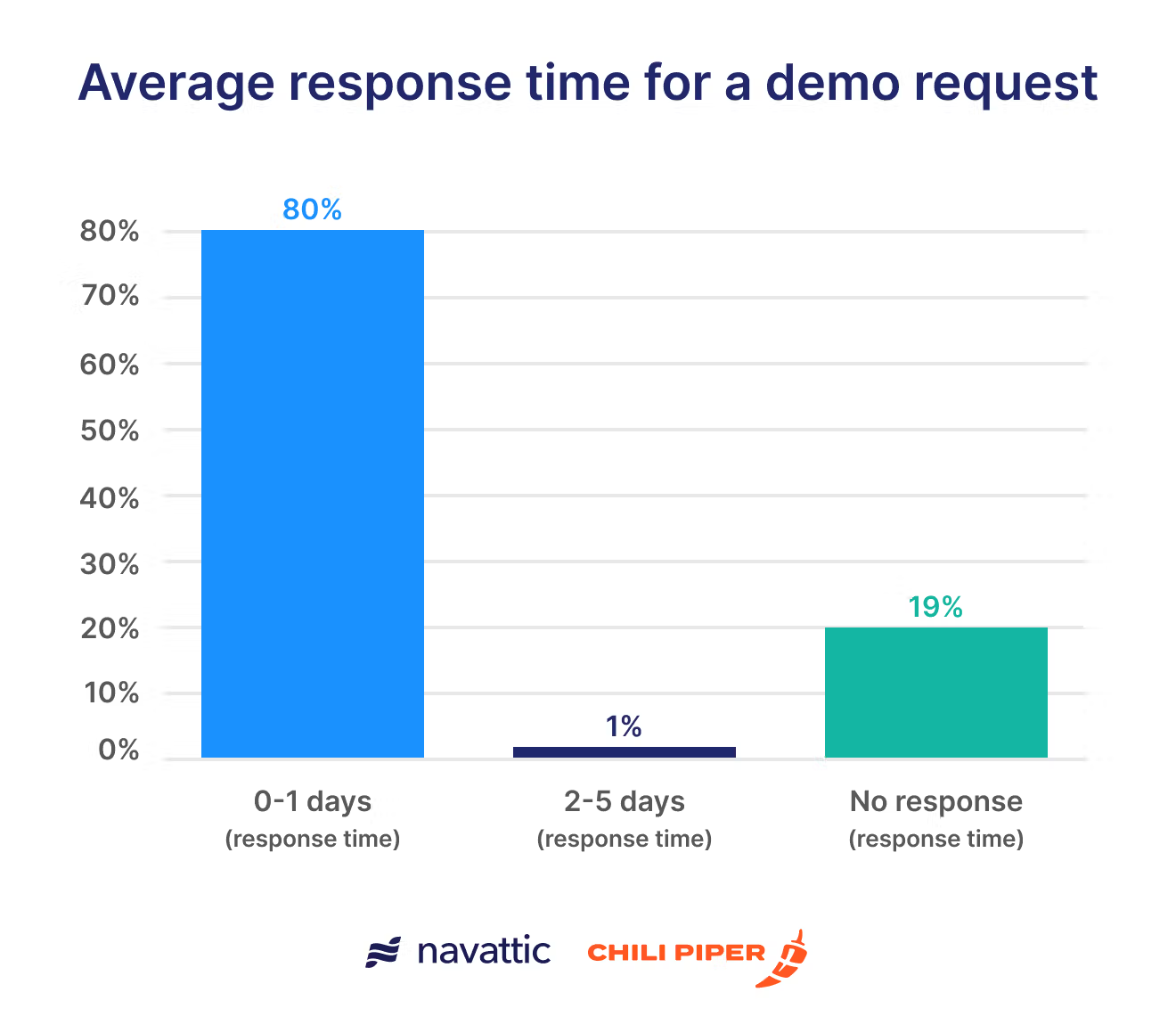
Top SaaS companies also tend to include interactive demos on their website.
In fact, in the past year, nearly double the number of companies (17% vs. 31%) included interactive demos on their website.
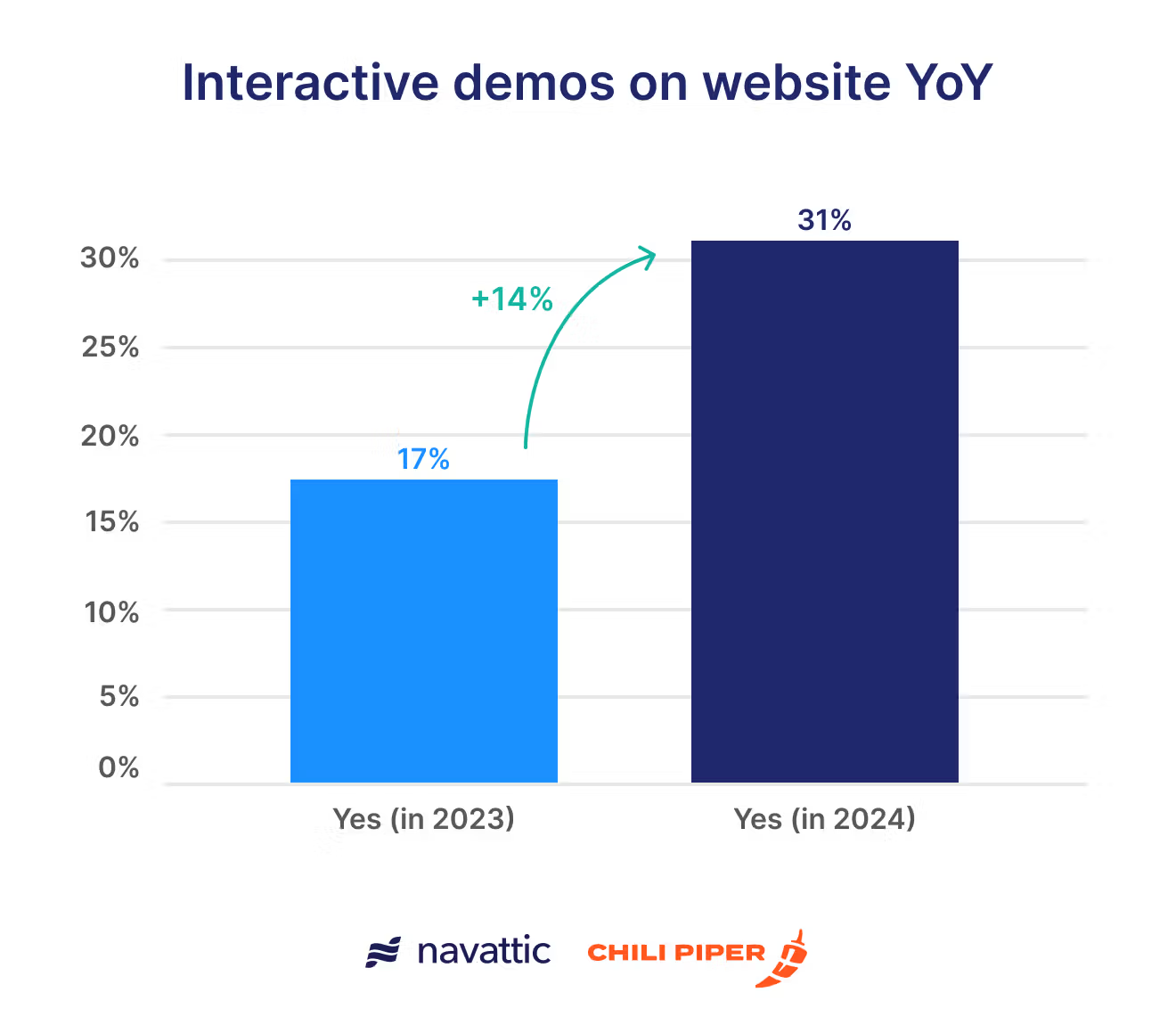
And they’ve adapted to use interactive demos in several ways, giving prospects a chance to try more of their product before they buy and envision using it in their day-to-day.
The three most popular types of interactive demos are:
- Overview (31%): General overview of the entire platform accessible from the navbar or homepage
- Product-specific (41%): Includes only one feature or product accessible from a product page
- Demo center (28%): Multiple demos of various features or use cases on one landing page
Think you've got a great buying experience? Grade your website here
How leading B2B companies improve buyer experience
In our 2024 B2B Buyer First Best Practices Report, we found that the best buyer experiences have three things in common — things you can apply to your GTM approach.
1. They are accessible
61% of the top 100 B2B SaaS companies make it easy to connect with their sales teams.
To do the same: Make it a priority to reply to demo requests within 24 hours or insert a calendar scheduler on their demo request forms.
2. They are usable
31% of the top 100 SaaS companies make it easy for buyers to try out their products.
To do the same: Feature an interactive demo prominently on your website and/or offer a free trial or freemium plan.
The team at Airbase actually boosted their live demo requests by adding interactive demos to their buying experience.
“It’s because users get to that moment with our interactive demo, where they say, ‘Yes. That is exactly what I want.’”
3. They are transparent
68% of the top 100 SaaS companies publicize their packaging.
To do the same: A public-facing pricing page can help your buyers see what you offer and the return they can expect on their investment.
5 steps to convince leadership
Persuading leadership is tough, but quantitative and qualitative data points and solid experimentation can win you the support you need to get and stay ahead of the B2B buyer experience curve.
Here’s how:
1. Gather external data
Your leadership wants to know that you’ve done your research and understand what separates mediocre buyer experiences from great ones.
Sources could include:
- Industry standards or reports for buying habits
- For example, G2’s 2024 Software Buyer Behavior Report
- Examples of what other marketing leaders are doing successfully
- You can learn a lot from gold-star buyer-first website, RingCentral
- Case studies that emphasize the need for a seamless buying experience
- Gong, a leader in the SaaS space, improved their form conversion by 70% by streamlining their demo requests with Chili Piper.
At Navattic, I interviewed top marketing experts and asked them how companies can improve the buying experience. Here are some of their responses:
- Fewer handoffs. Kyle Lacy, CMO at Jellyfish: “The fewer human beings in the process, the better. Do not hand me off to three different people to help make a buying decision.”
- Calendar embeds. Brendan Hufford, Founder of Growth Sprints: “If you’re going to push for a demo booking, let them book the demo immediately. Just embed a calendar.”
- Pricing pages. Erin Balsa, Founder of Haus of Bold, “Adding pricing to a website request gives people a general sense of whether or not to proceed. They don’t waste time sitting on a discovery call and getting grilled only to discover your product is out of budget.”
2. Gather internal data
Internal data is just as valuable as external data. And prospects and customers will tell you what they want.
By listening to sales calls and talking to customers, you’ll start to pick up on patterns that help justify your focus on the buyer experience.
For example, at Navattic, we have a field on our book a demo form that says, ‘Please share anything that would help us prepare for our meeting.’
When we looked at the numbers, prospects said they wanted something related to pricing 15% of the time.
Marketers were also constantly contacting me on LinkedIn about our pricing. They were interested in using Navattic but weren’t sure it was in their budget.
Both of these data points showed it wasn’t just my opinion that our buyers wanted public-facing pricing, helping move the needle forward on our decision.
3. Align with your sales or product team
Sales and product will have a big say in how you focus on the buyer experience, and because they’re one of the biggest stakeholders, you need their support.
At Navattic, I had to convince our Head of Sales, Ben Pearson, that public-facing pricing would lead to better sales cycles and that it was what prospects actually wanted.
To do that:
- I found multiple recordings of prospects asking for pricing.
- I showed him messages I got on LinkedIn from people asking me for pricing.
- I found a few deals where we showed pricing earlier in the sales cycle and closed them easier and faster.
All of these examples were signs that public-facing pricing could create higher-quality leads with fewer objections during the sales process.
In an episode of our podcast, Revenue on the Rocks, Ben said:
“The breaking point for me was imagining you worked at a company and you had prospects telling you all day long that they needed feature ABC, and you refused to build it.
Natalie was hearing about public-facing pricing constantly. We heard it on every call. Our prospects were craving and dying for it, so eventually, it was a decision we made.”
4. View your changes as an experiment
The first thing you do to improve the buyer experience may not be an instant success. That’s ok — you just have to experiment until you find your sweet spot.
If you’re a sales-led company: Use a Tiger Team approach. Select a group of sales reps that you know are open to experimentation. Then, ask them to start feeding different variations of your tests to prospects and customers.
At Navattic, we didn’t go all in and put pricing up on our website immediately. Instead, we focused on making incremental changes and seeing how prospects responded.
We first asked our reps to email potential customers our pricing before they chatted with them and be more upfront with pricing in the sales cycle.
If you’re a product-led company: Try A/B testing. I’d recommend measuring down-funnel effects rather than just conversion rates. While you may get fewer free trailers, the ones you do capture will likely be more activated and eventually convert to paid accounts.
Note: Before you start testing, you'll need to decide your success metric. That way you can all agree if the test was successful or not.
If you’re looking for some guidance on different experiments, here are a few different buyer experiences you can test at varying degrees:
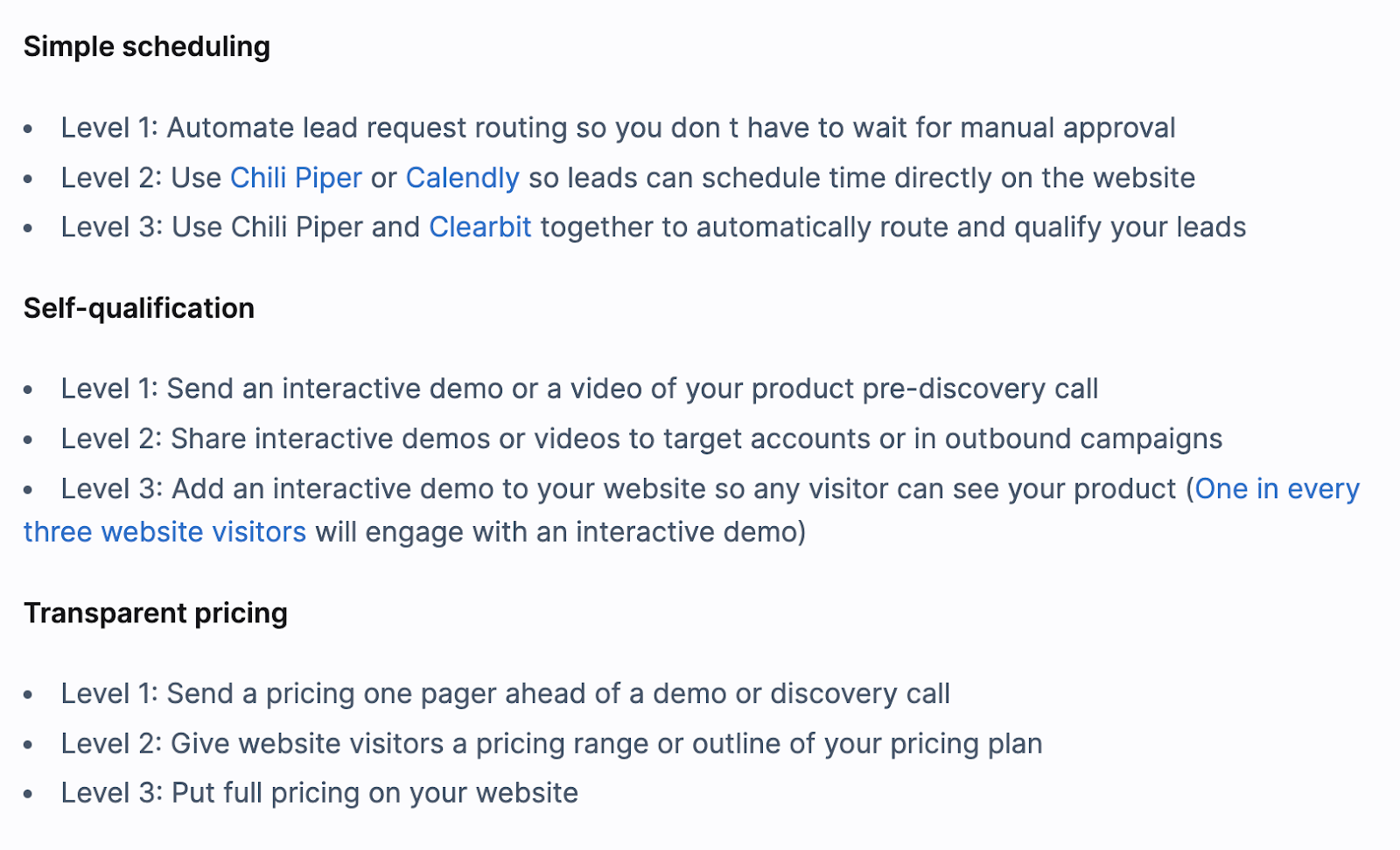
5. Share results and iterate
As you’re testing, sharing results with your team is critical.
Give them frequent updates on how it’s going and what you’ve noticed as you’ve started to experiment.
As we were testing out public-facing pricing, I created a Notion doc with all of the metrics we were tracking and shared results with the team on a weekly basis.
After each quarter, take a moment to zoom out. That’s where you’ll see the biggest change.
In our public-facing pricing experiments, quarter-end was when I noticed we’d reduced our sales cycle dramatically.
Navattic customer Coupa saw major changes to their sales cycle after making it easier for buyers to try out their product:
“Before Navattic, prospective customers had to wait 2-3 weeks to get a demo and even longer to get a test drive. With Navattic interactive demos, we’ve helped influence over $10M of ARR.”
The team at Jellyfish had a similar experience — adding Navattic product tours generated over $600k in pipeline in six months.
Curious what results you can drive with a more accessible, usable, and transparent buyer experience? Review our customer case studies.
3 B2B websites that put buyers first
Looking at other top websites can help you design a premier sales experience. Below, we walk through three different websites and explain how they meet buyer-first criteria.
RingCentral
RingCentral, an AI-based communications platform, is the gold standard for a buyer-first website. It’s got:
A phone number prospects can call in the top navigation, so they can get expert advice at any time.
A “View demo” CTA button that takes users to an interactive demo library, giving leads multiple use cases to explore.
They even divide them up into “Business Communications” and “Customer Experience” so users can easily find the features they want to see.
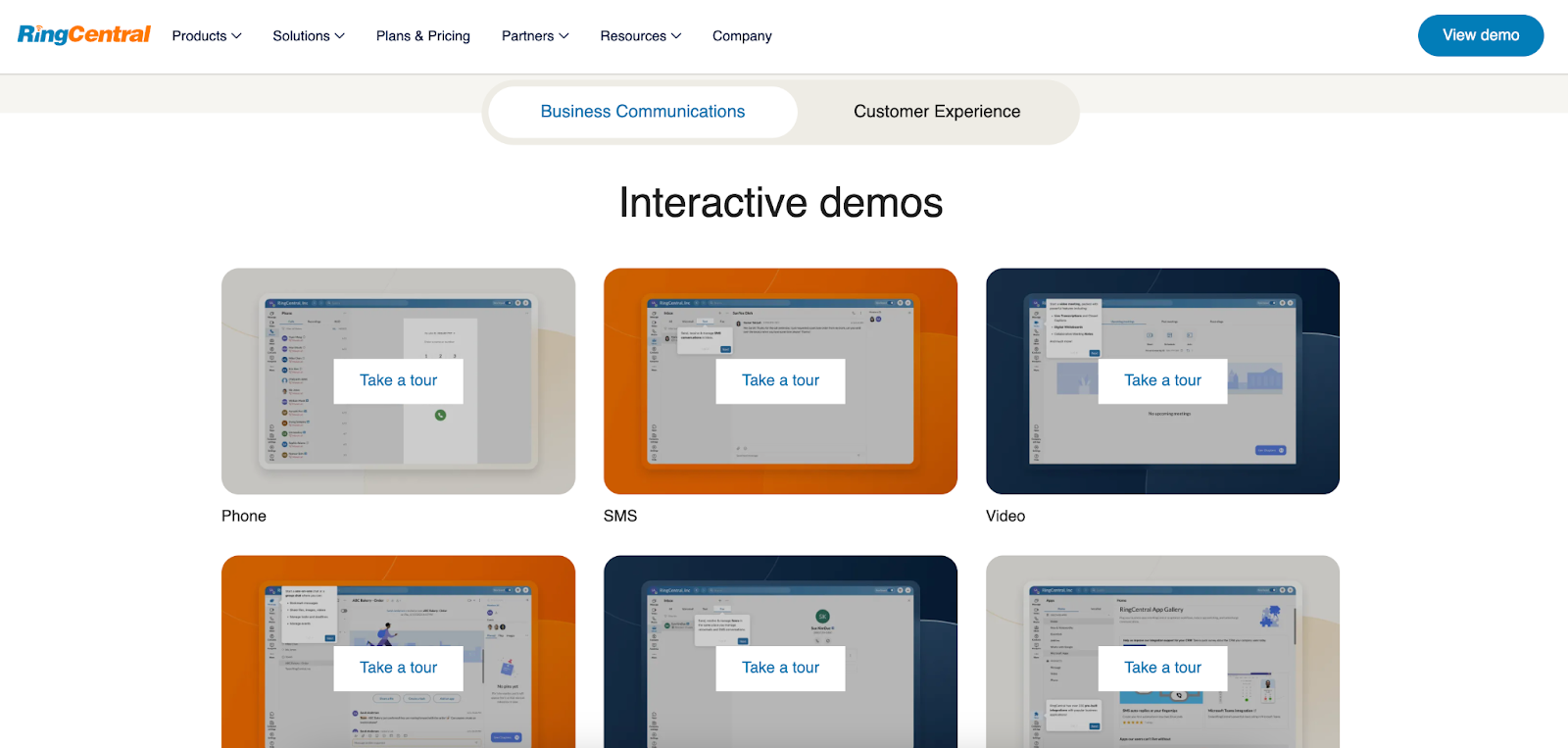
Public-facing pricing, which shows each plan’s price and included features.
They even have toggles for annual vs. monthly payments and number of users so prospects can get a true sense of what they’ll be paying if they convert.
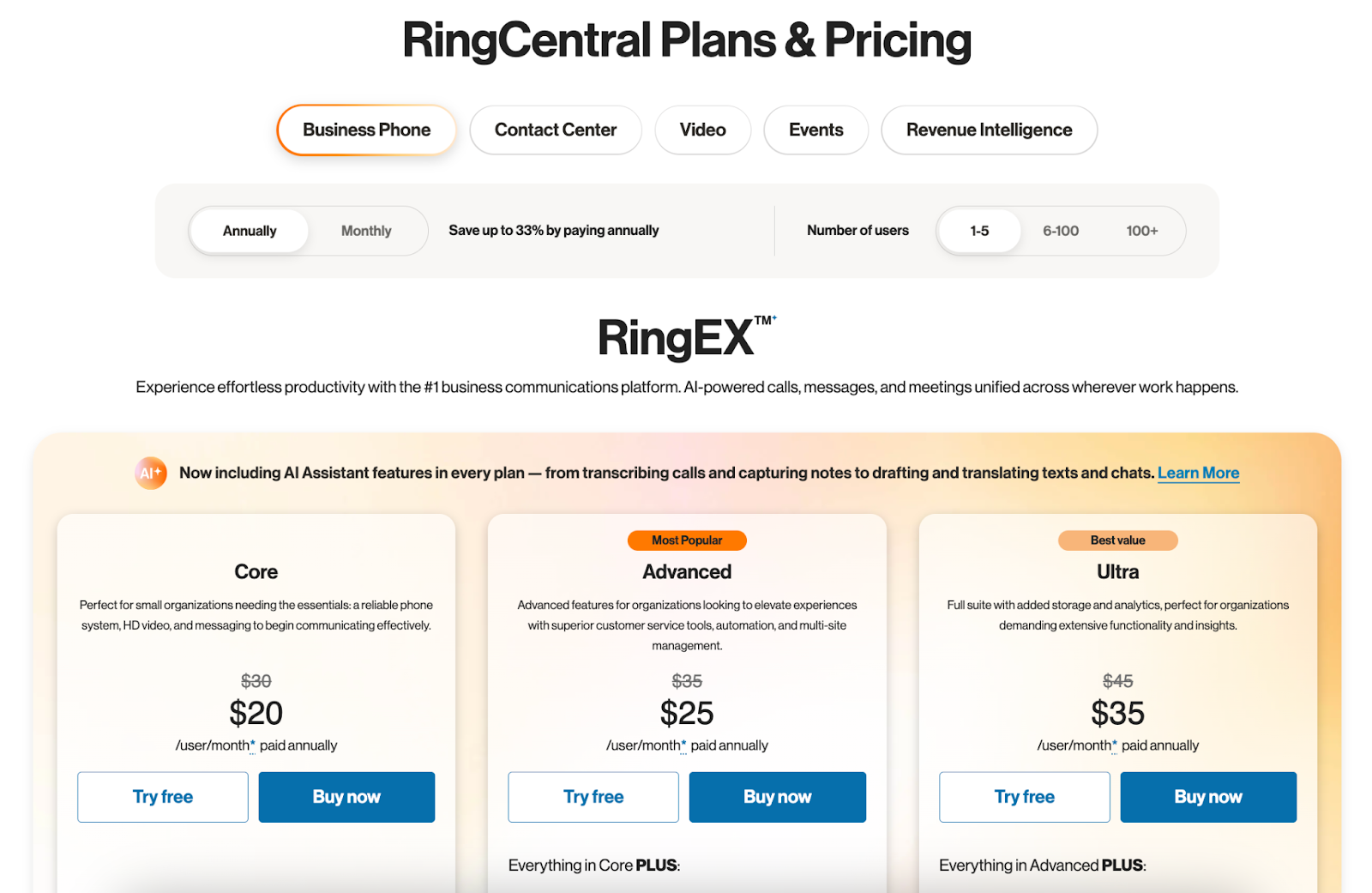
RingCentral made most of these changes last year, and though we can’t directly correlate growth with their buyer-first website, the fact that RingCentral's yearly revenue increased by 9% after adopting these best practices is a positive sign.
See our full breakdown of the RingCentral website here.
Remote
Remote, a global HR platform, has done a fantastic job of designing its website with the buyer in mind.
It’s got two book a demo CTAs on its homepage for visitors to get in touch with sales. One “Get started” button, right under the hero header, and one “Book Demo” CTA at the top right.
Clicking on either button opens up a book a demo without navigating the user to a separate page.
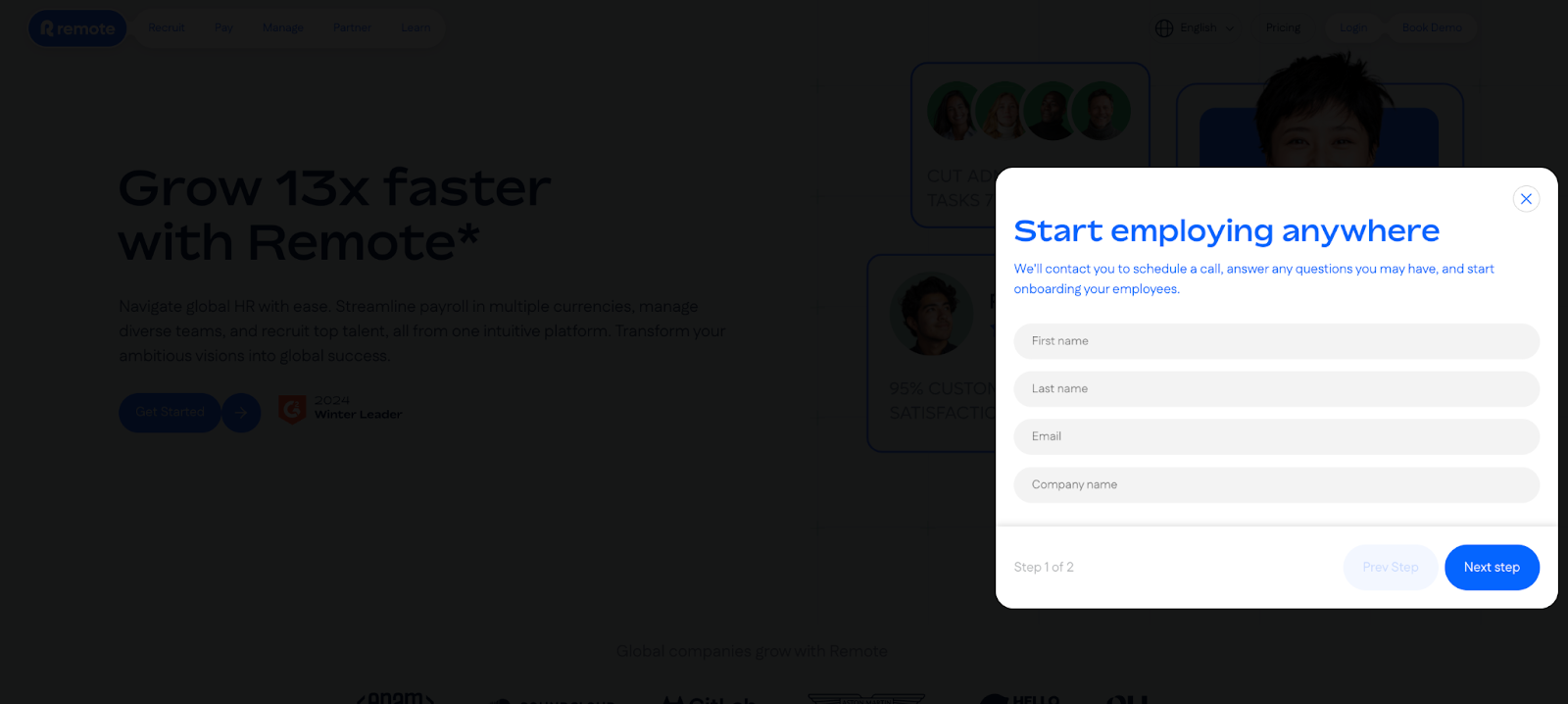
It also asks users what their main goal would be in using Remote to help tailor the live demo once it’s scheduled.
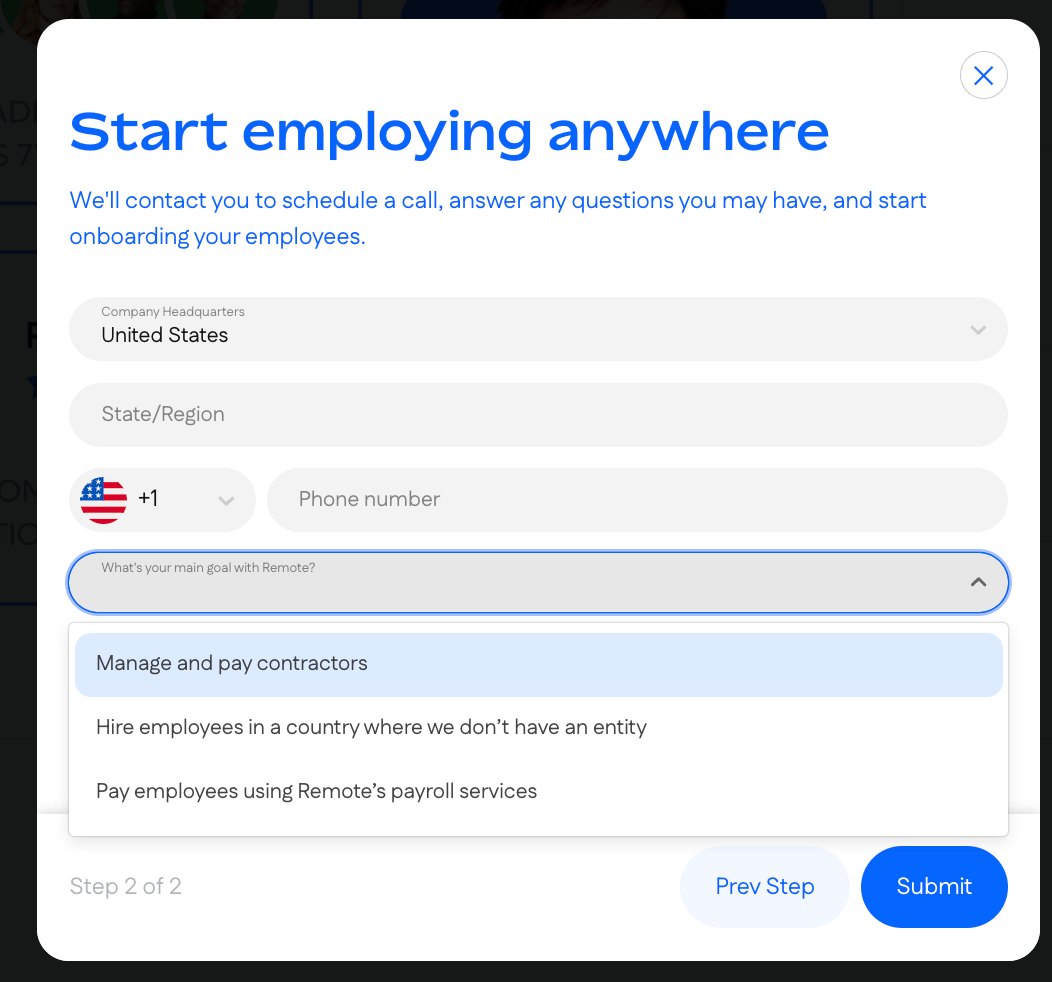
As visitors scroll further down the homepage, they see an interactive demo, which helps them understand the payroll process through Remote.
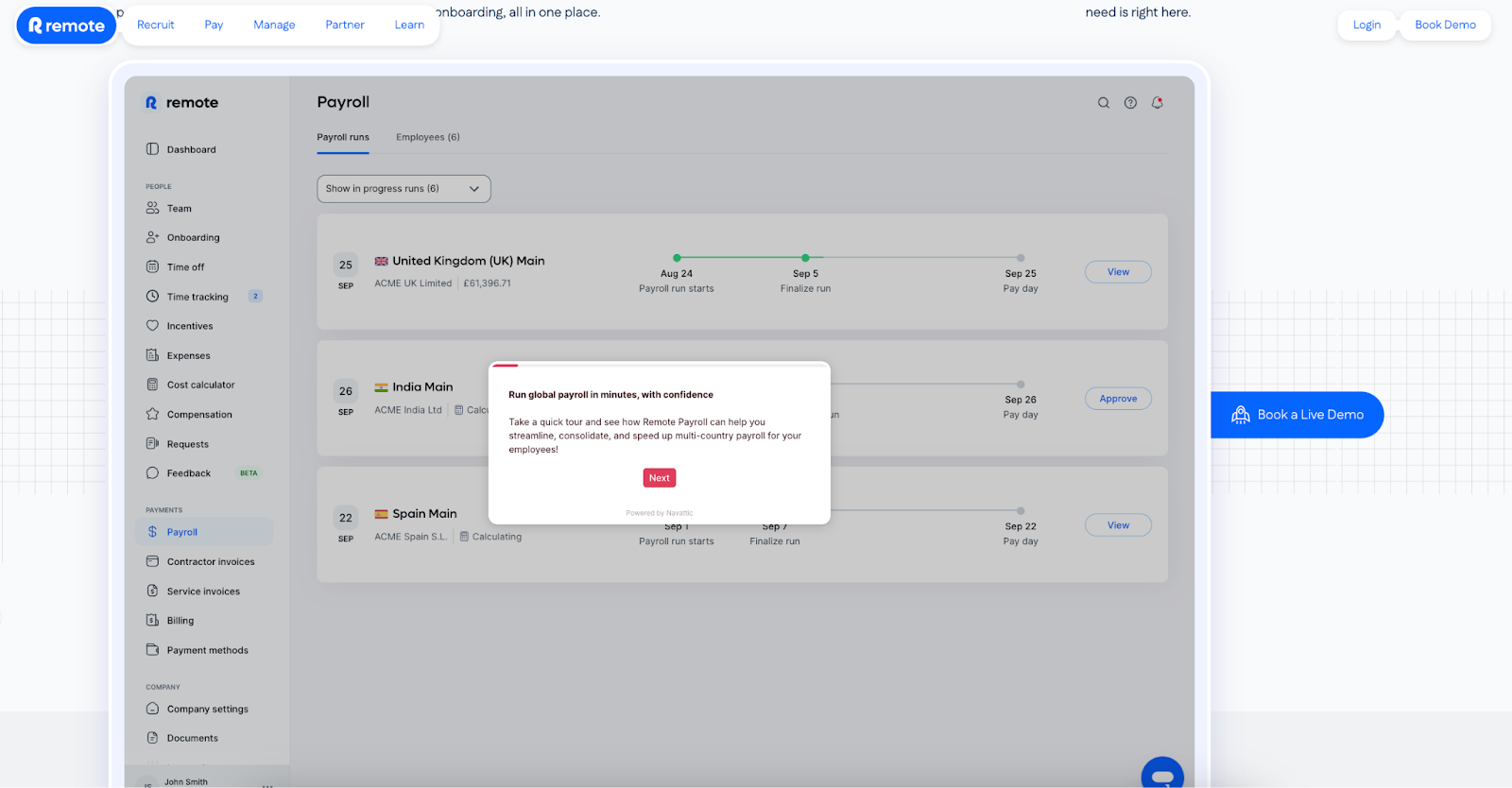
At the end of the tour, users are prompted to book a demo and get redirected to a more personalized landing page focused on running payroll with Remote.
The bottom of the homepage has a final CTA to “Show all plans.”
Clicking that button jumps you straight to their pricing page (in the same window!) showing three detailed pricing plans.
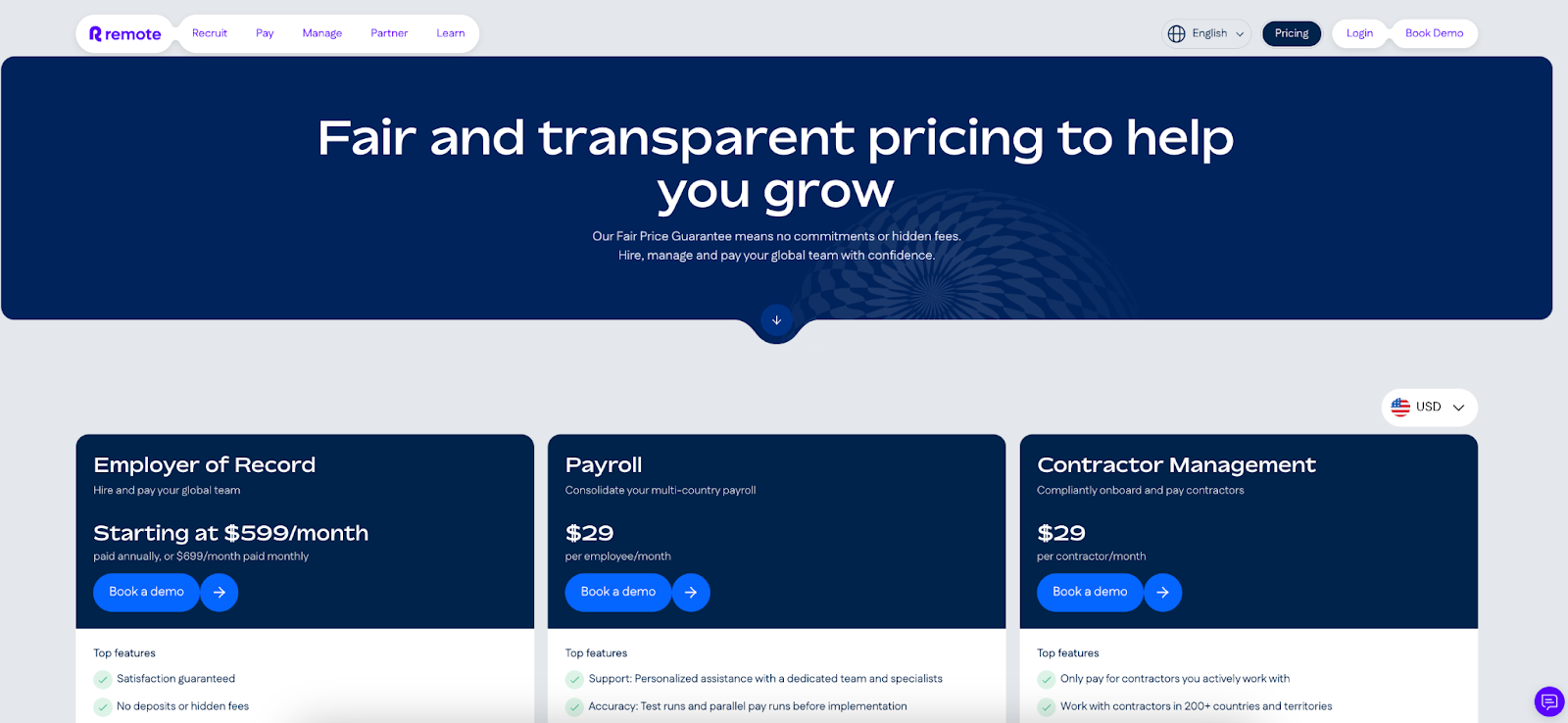
In case users haven’t already filled out a book a demo form, they’re prompted to do so here — right underneath the list price of each plan.
See our full breakdown of the Remote website here.
Matillion
Matillion, a cloud-based data productivity platform, follows buyer-first guidelines to a T.
For one, visitors have multiple opportunities to talk to sales on the Matillion homepage. They can “Book a demo” in the upper right corner or “Contact Sales.”
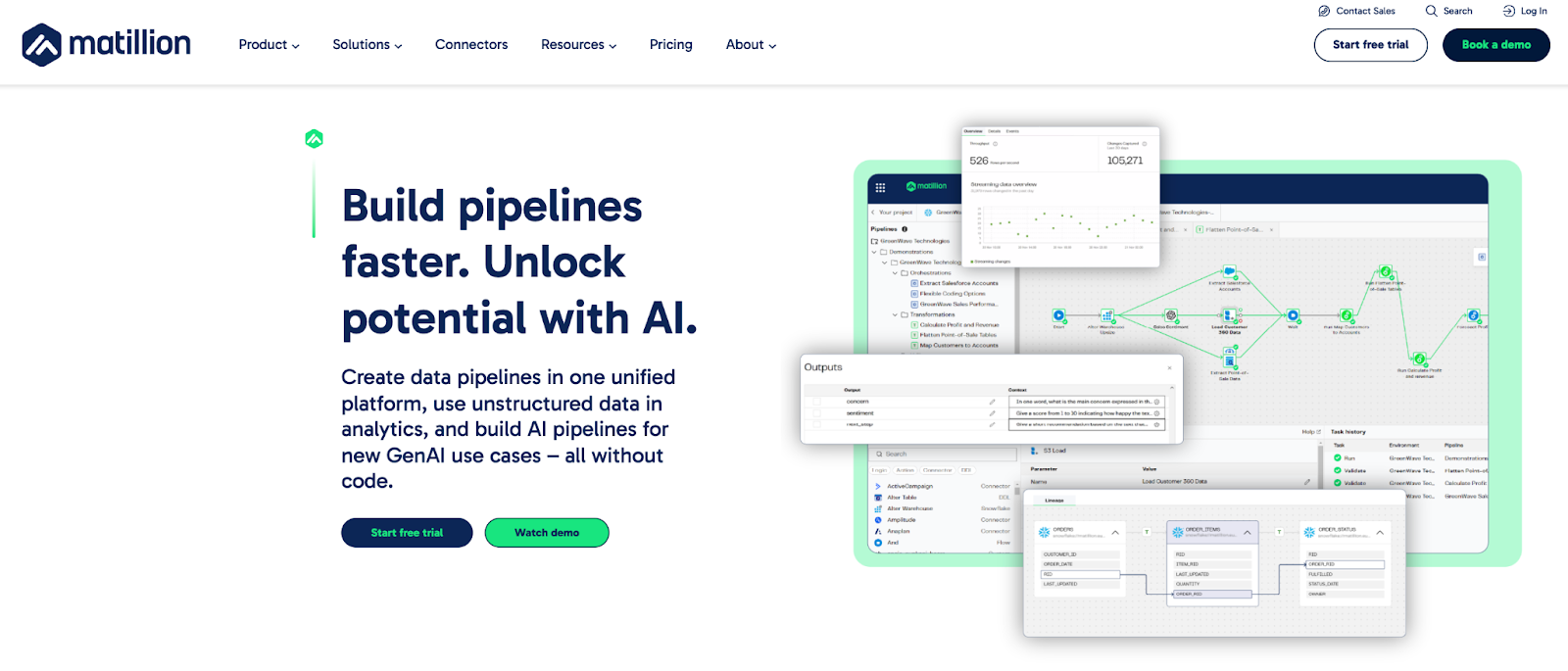
On the form pages, leads have a chance to inform sales of what they’re looking to accomplish with Matillion, ensuring reps go into the call prepared.
As users scroll down the homepage, they are invited to take an interactive demo of Matillion’s AI or ELT pipelines.

Clicking “Try Interactive Demo” refreshes the page to a full-screen demo, where they can learn more about building and managing pipelines in Matillion.
Clicking “Try Interactive Demo” refreshes the page to a full-screen demo, where they can learn more about building and managing pipelines in Matillion.
The Matillion team also has a persistent “Pricing” tab in their top navigation so visitors know what plan options are available to them.
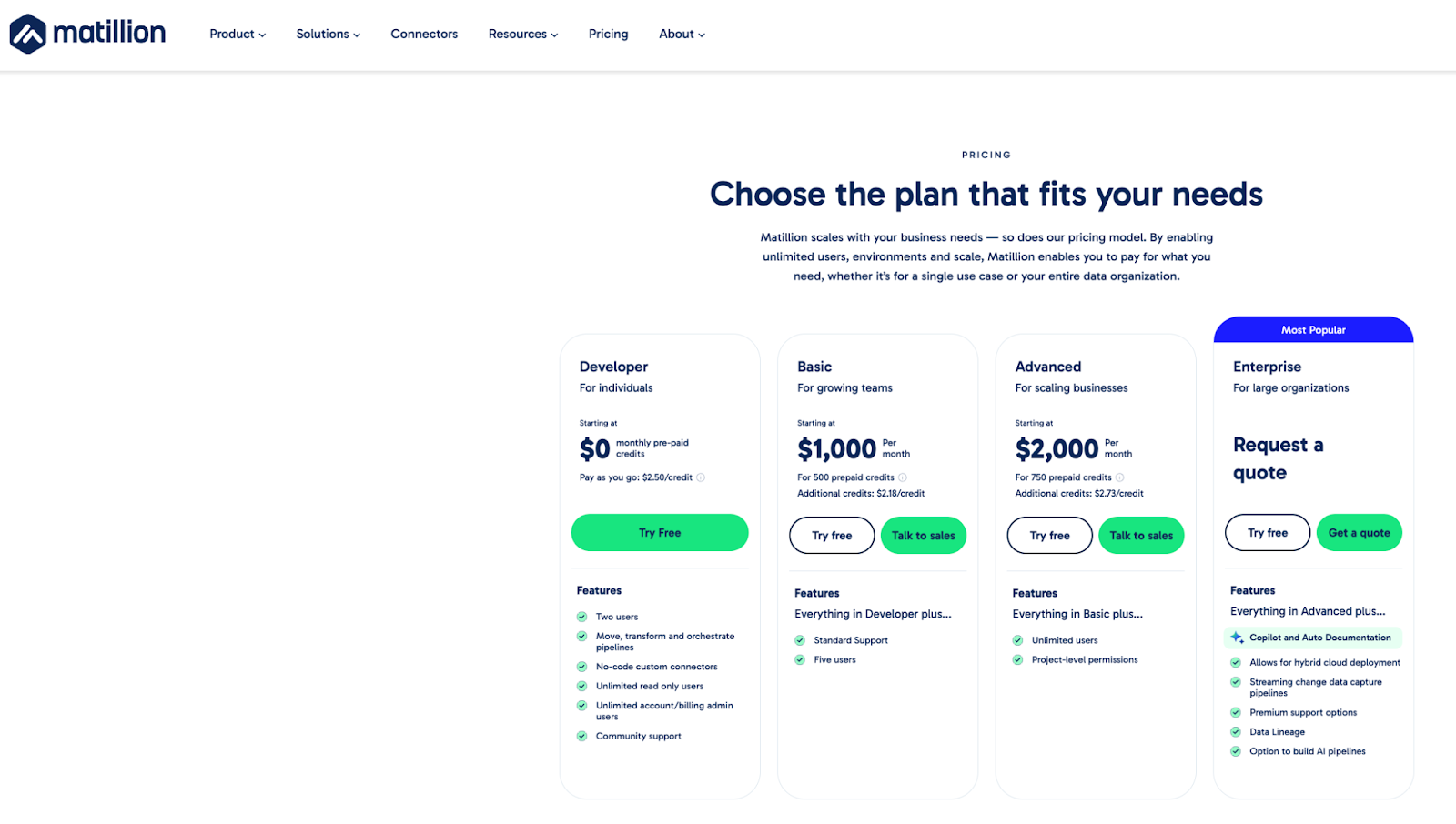
See our full breakdown of the Matilion website here.
Want more examples like these?
Subscribe to our Buyer First Bites Newsletter to get bi-weekly examples of buyer-first websites.